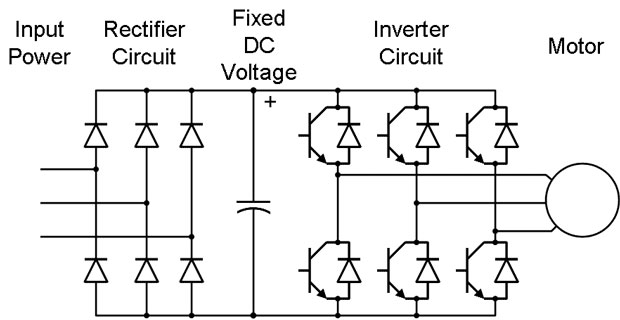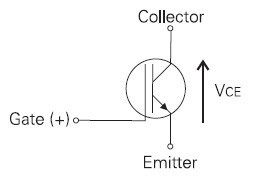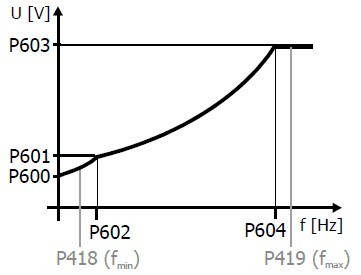Variable frequency drive Ramping
VFDs offer many of the same advantages as reduced-voltage & soft start starters. The timed speed ramp-up feature found in variable frequency drives is similar to the soft start function of starters. However, the variable frequency drive timed speed ramp-up generally has a much smoother acceleration than soft starting, which is usually done in steps. Soft starting with a variable frequency drive reduces the frequency initially supplied to the motor & steps up the frequency over a preset period of time. Variable frequency drives with soft start capabilities have replaced many of the older types of reduced-voltage starters. While variable frequency drives offer soft start capabilities, true soft start starters are not considered VFDs.
Ramping is the ability of a variable frequency drive to increase or decrease the voltage & frequency to an AC motor gradually. This accelerates & decelerates the motor smoothly, with less stress on both the motor & connected load. Ramp-up is generally a smoother acceleration than the stepped increases used in soft starters. The length of time pre set for the speed ramp-up can be varied from a few seconds to 120 seconds or more, depending on the VFD capabilities.
Timed ramp-down is a function of variable frequency drives that provides smooth deceleration, bringing the motor to a full stop in a preset time. Acceleration & deceleration are separately programmable. Depending on VFD parameters, ramp down times can vary from fractions of a second (when used with dynamic braking) to more than 120 seconds.
The ramp-down function is applied in processes that require smooth stops, but also require the process to stop within a given period of time.
Ramping is the ability of a variable frequency drive to increase or decrease the voltage & frequency to an AC motor gradually. This accelerates & decelerates the motor smoothly, with less stress on both the motor & connected load. Ramp-up is generally a smoother acceleration than the stepped increases used in soft starters. The length of time pre set for the speed ramp-up can be varied from a few seconds to 120 seconds or more, depending on the VFD capabilities.
Timed ramp-down is a function of variable frequency drives that provides smooth deceleration, bringing the motor to a full stop in a preset time. Acceleration & deceleration are separately programmable. Depending on VFD parameters, ramp down times can vary from fractions of a second (when used with dynamic braking) to more than 120 seconds.
The ramp-down function is applied in processes that require smooth stops, but also require the process to stop within a given period of time.
What is the ramp-pair selection parameters in the VFD drive..pls described me
Post a Comment:
You may also like:
Featured Articles
What is VFD, How it works? - VFD ...
 VFD is shorted for Variable Frequency Drive (also known as AC Drives and Inverters) -- that's used to make an AC motor working in ...
VFD is shorted for Variable Frequency Drive (also known as AC Drives and Inverters) -- that's used to make an AC motor working in ...
 VFD is shorted for Variable Frequency Drive (also known as AC Drives and Inverters) -- that's used to make an AC motor working in ...
VFD is shorted for Variable Frequency Drive (also known as AC Drives and Inverters) -- that's used to make an AC motor working in ...VFD: Insulated Gate Bipolar Transistor ...
 IGBT (insulated gate bipolar transistor) provides a high switching speed necessary for PWM VFD operation. IGBTs are capable of ...
IGBT (insulated gate bipolar transistor) provides a high switching speed necessary for PWM VFD operation. IGBTs are capable of ...
 IGBT (insulated gate bipolar transistor) provides a high switching speed necessary for PWM VFD operation. IGBTs are capable of ...
IGBT (insulated gate bipolar transistor) provides a high switching speed necessary for PWM VFD operation. IGBTs are capable of ...Three phase inverters
 In the variable frequency drive rectifier paper, it explains how to go from three phase alternating current voltage to a direct ...
In the variable frequency drive rectifier paper, it explains how to go from three phase alternating current voltage to a direct ...
 In the variable frequency drive rectifier paper, it explains how to go from three phase alternating current voltage to a direct ...
In the variable frequency drive rectifier paper, it explains how to go from three phase alternating current voltage to a direct ...Variable Frequency Drive Harmonics and ...
A discussion of the benefits of variable frequency drives often leads to a question regarding electrical harmonic distortion ...
Variable frequency drive Energy saving
 Energy can be saved in a VFD by reducing the losses in the electric motor or by reducing the energy consumption of the variable ...
Energy can be saved in a VFD by reducing the losses in the electric motor or by reducing the energy consumption of the variable ...
 Energy can be saved in a VFD by reducing the losses in the electric motor or by reducing the energy consumption of the variable ...
Energy can be saved in a VFD by reducing the losses in the electric motor or by reducing the energy consumption of the variable ...
VFD manufacturers
